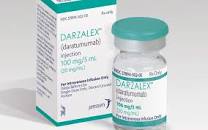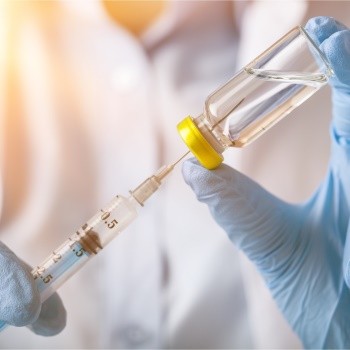“… daratumumab/darzalex is both cytotoxic to Multiple Myeloma and causes side effects- especially to elderly patients.”
Good afternoon, David. My name is Sherry. My elderly dad who is 74 years old is at a very tough point in his multiple myeloma cancer journey. He has done multiple rounds of chemotherapy and yet they have shared with him that he is not eligible for an autologous stem cell transplant (ASCT).

I am a nutritionist and very well-versed in natural approaches. I really try to determine the best ones specifically for multiple myeloma.
It sounds like you would highly recommend the clinic in Houston that you went to. He’s already on many of the supplements that you have discussed on your website.
I would like to have a conversation with you. Is there such thing as just having one consultation? How much would that be?

My elderly dad is so weak right now and chronic diarrhea. He just turned so fast – literally over 6 weeks. His oncologist is recommending daratumumab (I think that’s the name) for his last treatment option. I don’t like the side effects I’m seeing on that one when I read.
My elderly dad is already really fatigued but they feel that darzelex will target the MM cells. Did you undergo daratumumab? We are just weighing whether that is the best to have more chemotherapy or to just let him be comfortable. My heart just feels broken.
Any insight on that med is appreciated. Can darzalex/daratumumab truly help someone in this condition …??
Thank you so much. I look forward to hearing back from you. Sherry
Hi Sherry-
I must begin my reply by saying that I don’t believe the elderly 74 year old MM survivor should undergo an ASCT. Too much toxicity. I have worked with many elderly MM survivors who enjoy a higher quality of life and longer overall survival by undergoing low-dose therapies coupled with one of the many integrative therapies shown to enhance the efficacy of chemotherapy.
Yes, we can have just one consultation. You and your dad will get more out of the consultation if you can email me your dad’s most recent diagnostic information- blood, urine, imaging. Can you send me this information?
No, I have never undergone daratumumab. This chemotherapy regimen is relatively new and had not yet been invented when I underwent chemotherapy in the nineties.
On the one hand, yes, daratumumab aka darzelex can manage your dad’s MM be it partial remission, complete remission, etc.
On the other hand, your dad will face the possibility of side effects. Even the MM patient in his/her 50’s or 60’s can experience side effects. The 74 year old MM patient who has already undergone many other chemotherapies will certainly feel the effects of this chemotherapy treatment.
Let me be clear. Like every other treatment your dad has undergone, daratumumab is both cytotoxic to MM and causes side effects.
Let me ask you this. Instead of more chemotherapy, could your dad take a break and try to rebuild his strength, rebuild his immune system?
- Is your dad experiencing any kidney or bone damage?
- Do you know his m-spike or other indicators of the level of MM in his blood?
In my experience, oncologists prescribe toxic therapies at the expense of the person. I understand why oncology does this, I’m simply asking if a break from toxic therapy might be a short term solution for your dad right now?
Has your dad ever had any Carfilzomib? Several non-toxic supplements have been shown to enhance the efficacy of Carfilzomib while they also fight MM and reduce toxicity.
thank you,
David Emerson
- MM Survivor
- MM Cancer Coach
- Director PeopleBeatingCancer
Recommended Reading:
“How it’s used-
- In adults who have received one or more previous treatments that didn’t work well or whose multiple myeloma came back. In this situation, Darzalex is used with lenalidomide and dexamethasone.
- In adults who have received one or more previous multiple myeloma treatment(s). In this situation, Darzalex is used with bortezomib and dexamethasone.
- In adults who have received two or more previous multiple myeloma treatments that included lenalidomide and a proteasome inhibitor, which is a type of drug. In this situation, Darzalex is used with the medications pomalidomide (Pomalyst) and dexamethasone.
- In adults who have received three or more previous multiple myeloma treatments that included a proteasome inhibitor and an immunomodulatory medication. In this situation, Darzalex is used by itself.
- In adults who have tried a proteasome inhibitor and an immunomodulatory medication, but neither drug worked for multiple myeloma. In this situation, Darzalex is used by itself…
Darzalex can cause mild or serious side effects. The following list contains some of the key side effects that may occur while taking Darzalex. This list does not include all possible side effects.
For more information on the possible side effects of Darzalex, talk with your doctor or pharmacist. They can give you tips on how to deal with any side effects that may be bothersome.
More common side effects
The common side effects of Darzalex can include:
If the side effects you’re feeling seem more severe or don’t go away, talk with your doctor or pharmacist.
Serious side effects
Serious side effects from Darzalex aren’t common, but they can occur. Call your doctor right away if you have serious side effects. Call 911 if your symptoms feel life-threatening or if you think you’re having a medical emergency.
Serious side effects and their symptoms can include the following:
- Infusion reaction, a type of allergic reaction. Symptoms can include:
- Pneumonia, a type of lung infection. Symptoms can include:
- coughing up phlegm (mucus)
- fever and chills
- shortness of breath
- chest pain
- Hepatitis B, if you’ve had it in the past. Symptoms can include:
- worsening tiredness
- yellowing of your skin or the white part of your eyes
- Peripheral sensory neuropathy (nerve damage that causes tingling, numbness, or pain). Symptoms can include:
- numbness or tingling
- burning pain
- sensitivity
- weakness in your hands or feet
- Peripheral edema (swelling of the hands and feet). Symptoms can include:
- swelling of the arms or legs
- stretched skin
- skin that dents (pits) when pressed for a few seconds
Other serious side effects, explained in more detail below in “Side effect details,” include:
- allergic reactions
- thrombocytopenia, a low level of platelets, which are a type of blood cell that helps blood clot
- neutropenia, a low level of neutrophils, which are a type of white blood cell that helps fight infections
- shingles (herpes zoster infection)





